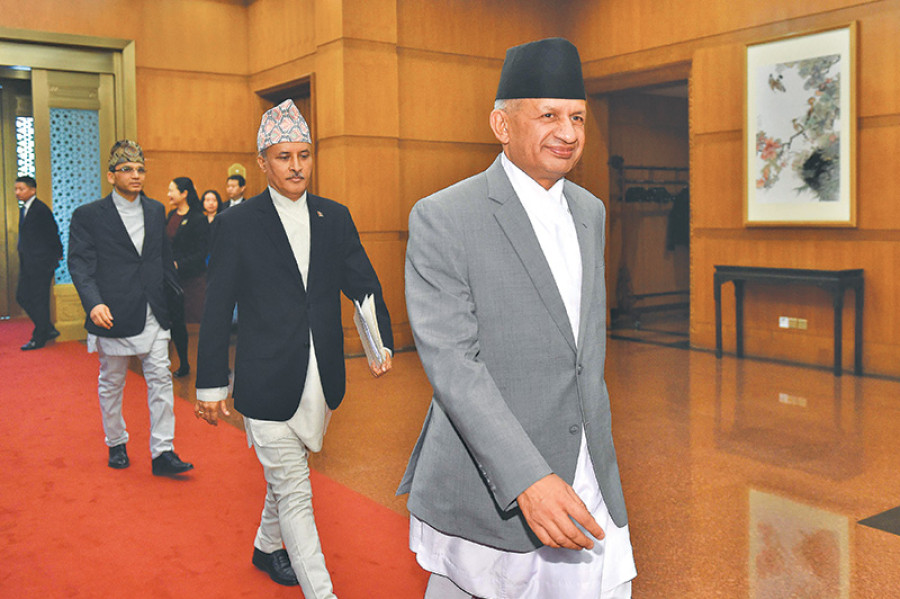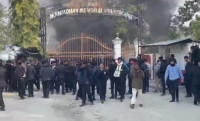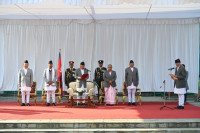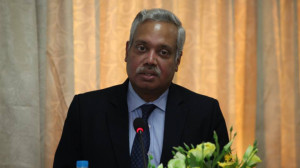National
Belt route will ‘revive Nepal and China ties’
Foreign Minister Pradeep Gyawali has said the Belt and Road Initiative (BRI) will revive business and cultural exchanges between Nepal and ChinaIt is Nepal’s honour to work with China under the BRI for greater mutual prosperity.
Anuj Kumar Adhikari
Foreign Minister Pradeep Gyawali has said the Belt and Road Initiative (BRI) will revive business and cultural exchanges between Nepal and ChinaIt is Nepal’s honour to work with China under the BRI for greater mutual prosperity.
He said this while speaking at an event on Nepal-China Relations and Development Prospects in Trans-Himalayan Region at the Sichuan University, Chengdu on Friday.
The proposed projects under the BRI should utilise the rich resources along the Himalayan range and improve the quality of people’s lives in those areas, the minister said.
“The facilities and infrastructures will not only raise the standards of living of the people residing in those far-flung areas, but also support conservation efforts and help overall development of that region,” Gyawali said.
“Building cross-border infrastructure is very important for landlocked countries like ours. We expect the BRI to contribute to our development efforts,” he said.
Nepal became BRI member in May 2017, a key international project of Chinese President Xi Jinping.
“Connectivity lies at the core of all development activities,” he said. “Development of infrastructure along the trans-Himalayan region is critical for promoting economic opportunities by ensuring efficient movement of people, services and goods across the region.”
“Time is ripe now to revive the ancient glory acquired from exchanges between Nepal and China. Nepal stands ready to work together for trade and economic integration towards common prosperity,” he said.
Recalling Nepal’s link with the ancient Silk Road, the minister said Nepal was an important partner of the ancient route. The wealth generated by the trans-Himalaya trade had helped Nepal build marvelous architecture and monuments in Kathmandu Valley.
He said trade was an important pillar of the economies of both Nepal and western China in ancient time. This slackened at the beginning of the 19th century owing to technological advancement and knowledge development in Europe. “The trans-Himalayan routes had immense influence on land extending from present-day western China, central China, Turkmenistan, Bamiyan (Afghanistan), Mongolia, Nepal, Bangladesh (Chittagong), Sri Lanka, and India (from Kolkata to Kashmir),” said Gyawali.
The large-scale trade and cultural ties between South Western China and South Asia since ancient times also contributed to cultural exchanges across continents.
Sichuan Province is Nepal’s largest trading partner in China after Tibet. Sichuan was the first among the provinces of China to dispatch medical teams to Nepal after the earthquake in April 2015.
He also lauded efforts of the Sichuan University to go beyond border and collaborate with the universities in south Asia that includes Nepal.
“I also would like to thank the University for providing learning opportunities and platform to the academicians, students, and researchers of Nepal and substantially contributing for their capacity building endeavor,” he said.




 19.12°C Kathmandu
19.12°C Kathmandu















